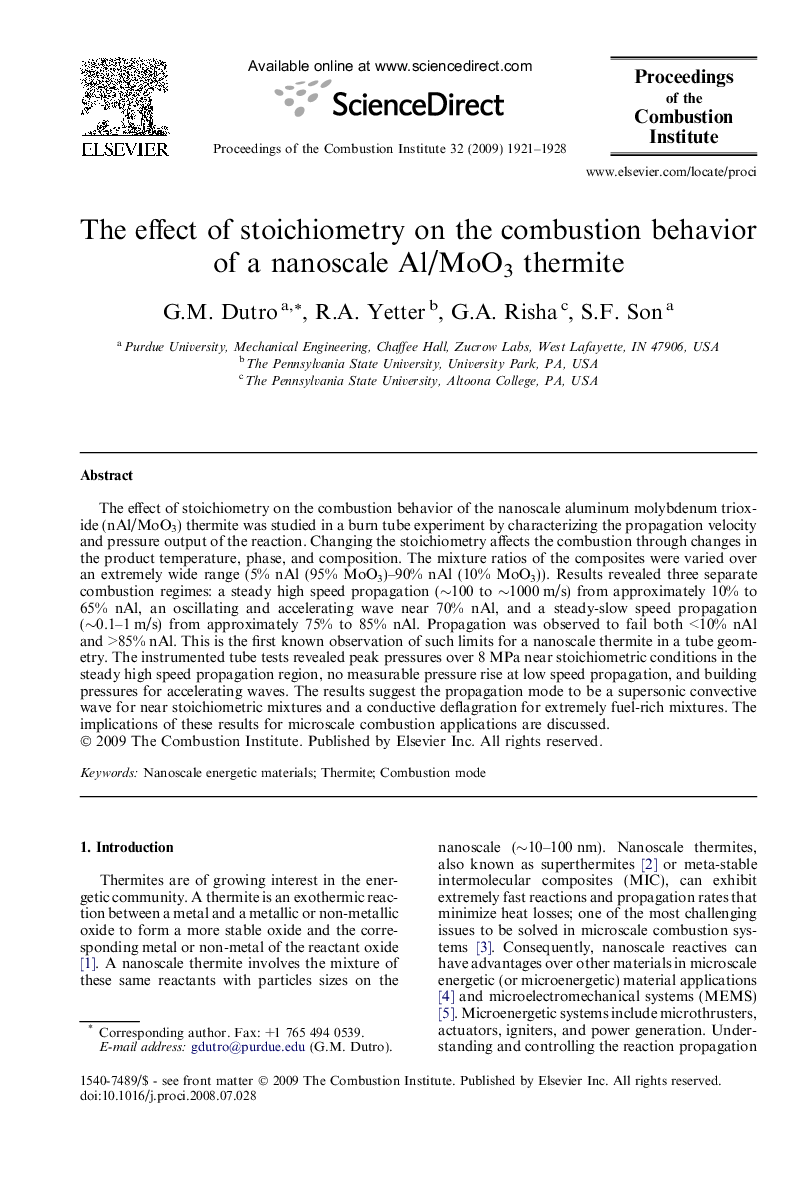| Article ID | Journal | Published Year | Pages | File Type |
|---|---|---|---|---|
| 241042 | Proceedings of the Combustion Institute | 2009 | 8 Pages |
The effect of stoichiometry on the combustion behavior of the nanoscale aluminum molybdenum trioxide (nAl/MoO3) thermite was studied in a burn tube experiment by characterizing the propagation velocity and pressure output of the reaction. Changing the stoichiometry affects the combustion through changes in the product temperature, phase, and composition. The mixture ratios of the composites were varied over an extremely wide range (5% nAl (95% MoO3)–90% nAl (10% MoO3)). Results revealed three separate combustion regimes: a steady high speed propagation (∼100 to ∼1000 m/s) from approximately 10% to 65% nAl, an oscillating and accelerating wave near 70% nAl, and a steady-slow speed propagation (∼0.1–1 m/s) from approximately 75% to 85% nAl. Propagation was observed to fail both <10% nAl and >85% nAl. This is the first known observation of such limits for a nanoscale thermite in a tube geometry. The instrumented tube tests revealed peak pressures over 8 MPa near stoichiometric conditions in the steady high speed propagation region, no measurable pressure rise at low speed propagation, and building pressures for accelerating waves. The results suggest the propagation mode to be a supersonic convective wave for near stoichiometric mixtures and a conductive deflagration for extremely fuel-rich mixtures. The implications of these results for microscale combustion applications are discussed.
